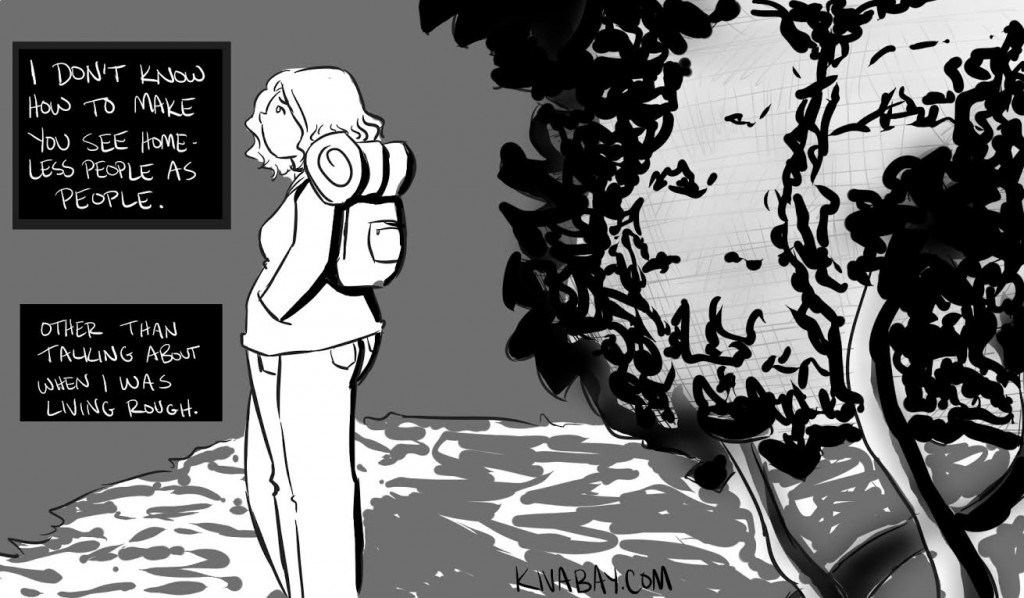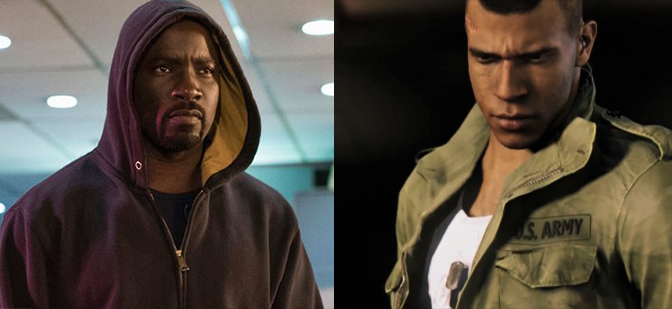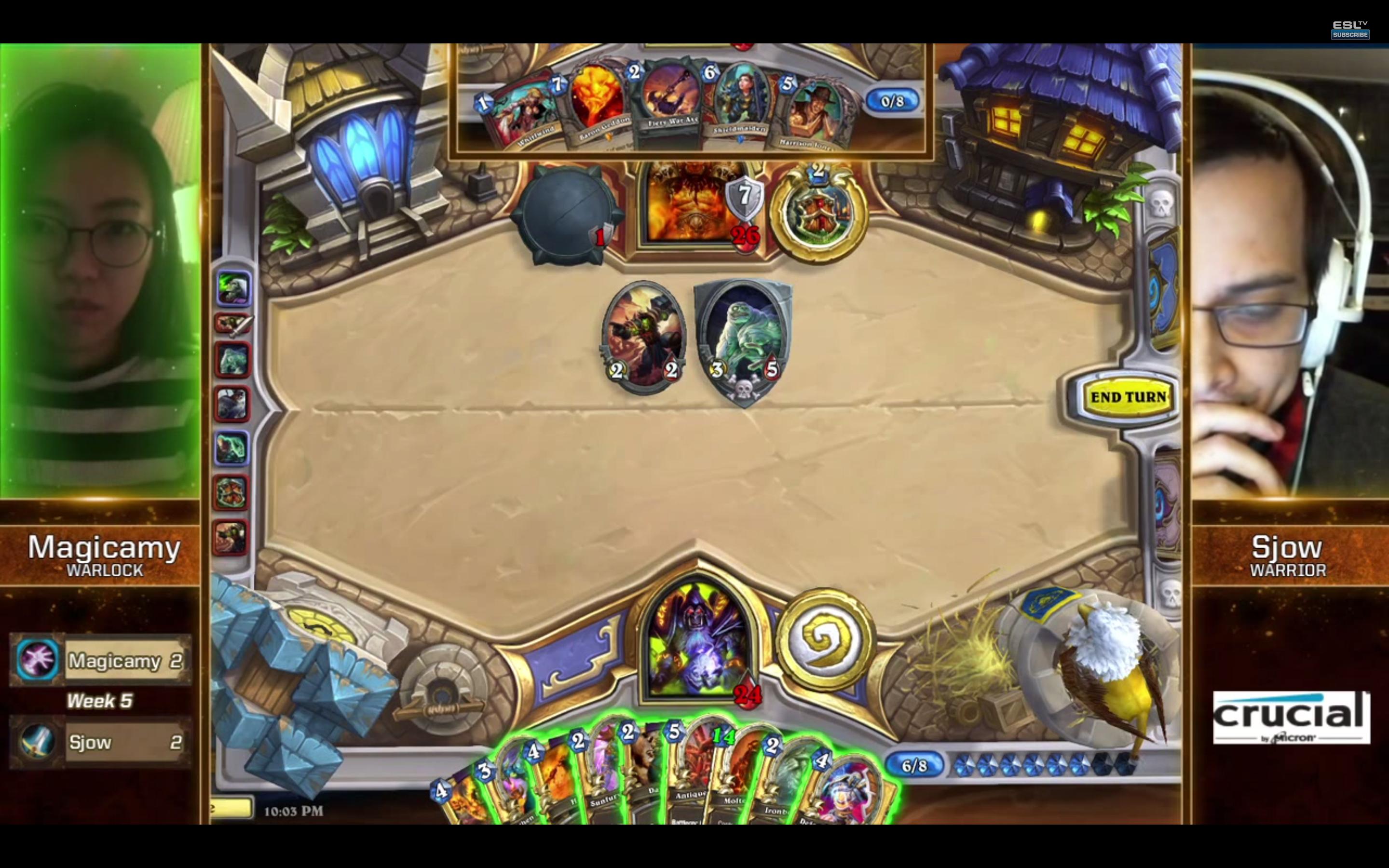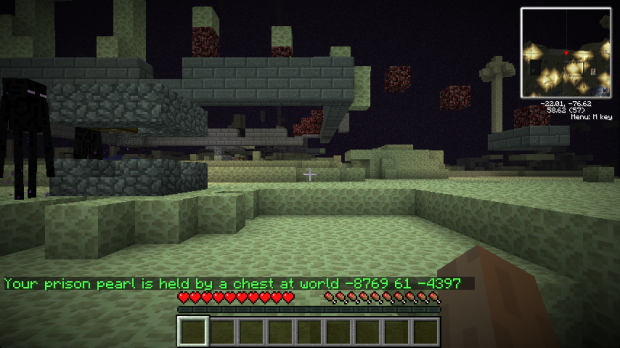Not long ago, Sam and I wrote about the monetary burden of performing critical work, and that and related issues have been a hot topic lately, with many discussions about gaming, cost, and access going down on social media. In the interest of continuing that discussion, and as part of our #yesIplay initiative, I sought out two women who had spoken passionately about the costs of being a gamer, and some of the related hardships.
First I spoke with Kiva Bay, artist behind the Feminist Deck, who’s been very outspoken regarding the difficulty of maintaing a gaming fandom identity during times of financial struggle. When asked to describe herself, Kiva said, “I’m a thirty-two year old survivor of poverty and many of the hardships that go hand-in-hand with that. I recently lost my job as a line cook and decided to try my hand at being an artist. So far, it’s been working. I make mostly pretty art and post it @kivabay on Twitter, and on my website kivabay.com.” (Note: we support Kiva’s Patreon, because she is so very prolific and fantastic.)
NYMG: You’ve spoken very frankly about your financial struggles, particularly in your relationship to being a gamer, and I just want to thank you for that. With so much of the conversation about gaming in the mainstream focused on pricey tech and new games, what are some of the things you did to maintain your own gaming identities and connections?
Kiva Bay: Thanks, and you’re welcome. I’m really glad to talk about it to an audience. I think there are many homeless people who would share their stories but feel ignored, especially with a generation of people who don’t really like making eye contact.
One of the things that I did to continue being a gamer (and also not lose my mind) was maintain a strong online presence during the time when I was homeless. I was fortunate enough to still have my old laptop when I lost my home, and so I could still play old games that I’d previously bought, like Jade Empire or some old Sonic.
A lot of what you do as a homeless person is wait. You’re waiting for the library or the student union to open so you can go inside and out of the cold. You’re waiting for it to stop raining so you can walk down to the DHS office. You’re waiting for dinner so you can walk down and line up at the soup kitchen. You’re waiting for Monday because it’s Sunday and there’s not a lot of dinners on Sunday. You’re just waiting a lot.
A lot of people have this idea that you should be using that time trying to get a job, and while I totally agree with that, I also am a bit more understanding that homelessness makes it really hard to get a job, especially during the recent economic crash. Spending time on the streets trains you to no longer feel like a regular human being. It slowly chips away at your sense of humanity until you no longer feel like you belong. This is what people mean when they talk about “fringe” members of society. As much as you are dependent on the system and its hours of operation, you’re outside of that normal schedule. Homelessness involves defining your space and constantly defending it without walls while also being considered worth less than other members of society.
I think what most homeless people want is to be talked to like they’re human. If you are fortunate enough to have a laptop, hold on to it if you ever lose your home. Online is one of the few places where people will actually talk to you like a person, which leads into the second thing I did to maintain my sanity, which was watching reviews and Let’s Plays on YouTube.
Since I couldn’t afford to buy any new games, let alone afford the consoles to play them on, let alone afford a house to keep them in- you get the idea. Since I couldn’t afford those things, I consumed games largely through Let’s Plays, game movies, reviews, fan art and fiction, and other things that I could have for free that were still a part of the fandom.
It’s interesting to me because South Park recently had this episode where they tried to show the difference between “old” gamers and “new” gamers who watch Let’s Plays, and made it out to be an age thing, using it as a commentary on people moving away from network television to internet shows. This was incredibly weird to me, because they clearly missed one of the biggest audiences for Let’s Plays: People who want to own the game, but can’t afford it. Are a lot of those people children who aren’t financially independent? Sure. But they don’t enjoy Let’s Plays because they’re young. They enjoy Let’s Plays because it’s a way for them to be a part of the fandom and community even when they can’t afford the game.
Why watch someone talk on YouTube about a game you’ll never afford? It feels like they’re talking to you. You’re having a conversation with someone about something you love, even if you aren’t doing any of the talking. It’s a way to have something like a conversation about something you love.
NYMG: While some of the barriers facing independent artists and creators are falling in the digital world—social media helps with building audience, for instance; many great dev tools for game devs are free—there’s still the issue of accessing those technologies. To compete these days, artists and creators need internet connections, hardware, software, more. Can you speak to how that might affect up-and-coming creatives, and do you have any advice to offer?
KB: Sure. It’s important to remember that my situation as a homeless person was a lot different than others because I still had my laptop. Many people who are homeless are limited to mobile devices, smartphones if they’re lucky but not the newest ones. There’s also the matter of maintaining your equipment in the field- a laptop has to be wrapped in a dry shirt and then a garbage bag to protect it from moisture, all of these things need charging and finding outlets is one of those things you become incredibly good at.
I’m very positive on digital art closing the gap, because once someone has their laptop and tablet, you end up saving money in the long run. I think a lot of people forget that artist tools are not cheap. I spent about $200 on supplies for a class once. People will tell you “all you need is pencil and paper” but if you want to do something commercial with your art to support yourself, people want you to spend some serious money on those pencils and that paper.
 However, the initial investment to get these digital tools is nothing to laugh at. If you live in a city like Portland and you’re housed you may be able to use a service like Free Geek to build a desktop for yourself but a tablet itself is not a small investment. I was fortunate enough to crowdfund my tablet, but the popular response to my campaign was because I had already shared art and had been adopted into a community.
However, the initial investment to get these digital tools is nothing to laugh at. If you live in a city like Portland and you’re housed you may be able to use a service like Free Geek to build a desktop for yourself but a tablet itself is not a small investment. I was fortunate enough to crowdfund my tablet, but the popular response to my campaign was because I had already shared art and had been adopted into a community.
This is just the hardware we’re talking about, too. While you can use free software that is great out there, it’s never quite as good as the stuff you’d really like to get your hands on. If you’re a student, you oftentimes get access to these programs or versions of them, like Photoshop Elements, but again, this is your next expense on top of hardware. This is starting to get expensive.
Fortunately, I think we’ve seen a lot of incredible stuff come out of retro-style altgames, which doesn’t require as much processing power or as many tools to create. Most of the pixel artists I’ve watched or read tutorials from have said that they prefer working with a mouse instead of a tablet, for instance.
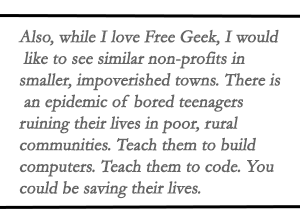 I’d like to see more access to hardware in libraries and public computer labs, but I’d also like to see more programs come to mobile devices. The ability to, for instance, compose music or make pixel art on a phone puts that in the hands of more poor people.
I’d like to see more access to hardware in libraries and public computer labs, but I’d also like to see more programs come to mobile devices. The ability to, for instance, compose music or make pixel art on a phone puts that in the hands of more poor people.
Also, while I love Free Geek, I would like to see similar non-profits in smaller, impoverished towns. There is an epidemic of bored teenagers ruining their lives in poor, rural communities. Teach them to build computers. Teach them to code. You could be saving their lives.
NYMG: Do you think we’ll ever reach a tipping point with the rising costs of luxury tech—and maybe more importantly, the sorts of tech we’re all “expected” to have?
KB: I don’t. But then I don’t know that we’re supposed to. Luxury tech is an industry that’s constantly changing and evolving, getting adopted by the public. When I was young, the fact that my family had a computer made us different than most of the families out there. These days, most every household has a computer or a mobile device that’s basically a handheld computer. Maybe it’s weird right now that, for instance, Zoe Quinn just feels magnetic fields. Maybe in ten years that won’t be weird, and half the population will have that. Cutting edge technology is always going to be more expensive and there will always be early adopters willing to spend that kind of money.
What I’m hopeful we’ll move away from is a consumer-style fandom where our worth as fans is measured by how much money we spend on a hobby. That’s marketing-executive-think and it’s got no place in the community. Should fans get excited and gather at their friend’s house to see the newest console when one of them can afford it early on? Yes. Absolutely. Is the friend who can afford the newest console first the “biggest fan”? Not necessarily.
It also poisons our rhetoric. One of the common arguments in gaming is the hardcore gamers vs. the filthy casuals. “Filthy casuals” in this respect refers to people who play app games on their phone. Interestingly, many of these people do not play “casually” and are completely invested in their games on their phone. When I go to parties, my friends aren’t talking about helping each other with campaigns in MonHun [Monster Hunter], but rather are talking about helping each other in Clash of Clans.
At a party.
Instead of partying.
Are they “casuals”?
The ‘filthy casual’ insult has less to do with a game’s level of engagement and more to do with that game’s accessibility. App games are played on mobile devices that most everyone has and are generally sold at prices that more people can afford.
The way this consumerism poisons our rhetoric goes even deeper, though. Our argument against these players being filthy casuals tends to be, “well, look how much money this one player spent on this supposedly casual game.” That’s really weird.
Rather than reaching a tipping point, I’d really like to see our conversation as a community move away from consuming a product to celebrating it. Rather than trying to figure out if a game is long enough to justify its price tag, I’d rather see is discussing if a game is good enough to justify its length. Rather than judging fandom on how much stuff you own, maybe judge someone’s fan-cred on how much they are a fan of something, i.e. how much they love it, know about it, and contribute to its fan community. If a person spends less than sixty dollars a year on games but contributes sixty pages of fan fiction a year to a game’s community, are they a fan? Easy answer is yes. But the way we judge fans these days, we stop listening after “spends less than sixty dollars a year on games.” That needs to change.
NYMG: Anything you want to add?
KB: Many of these problems are problems with consumerism, but that doesn’t mean I don’t think we should be game consumers. People who make games deserve to make money off them, and I don’t support pirating games. We have got to change the way we talk to each other as fans is all. It’s ridiculous that we’re judging each other as game fans on how much money we spend when games journalists, QAs, and other people working in the industry make so little. It’s time to change the conversation about what makes someone a fan and stop following the language that marketing executives want us to use.
 I also spoke with Katie O’Neal, a dynamite gamer I found on Twitter. Katie, who is frank and funny and wise, described herself as “a pink-haired dorky historian from UC Berkeley who is slowly rediscovering her love of gaming and writing. Her favorite games are Skyrim, Gone Home, Flower, and Journey, but she’ll play anything soothing and immersive. You can find her sharing gentle affirmations and scowling at bigots on Twitter (@gutterglitters).” I can only say she nailed it.
I also spoke with Katie O’Neal, a dynamite gamer I found on Twitter. Katie, who is frank and funny and wise, described herself as “a pink-haired dorky historian from UC Berkeley who is slowly rediscovering her love of gaming and writing. Her favorite games are Skyrim, Gone Home, Flower, and Journey, but she’ll play anything soothing and immersive. You can find her sharing gentle affirmations and scowling at bigots on Twitter (@gutterglitters).” I can only say she nailed it.
NYMG: Katie, you caught our attention when you spoke up on the #yesIplay hashtag about playing games at your own pace. When we talked to you, you said some of that choice is based on cost. Can you expand on that a little? How do you decide what to play, and when?
Katie O’Neal: I’ve trained myself to prefer playing games after they’ve left the headlines and gaming culture moves on to the Next Best Thing, because I am a college student with a part-time job and a student loan to think about. I don’t mind spending money on food and clothes and other things that count as necessities, but keeping up with the newest video games requires large amounts of money upfront. I have a laptop (that, at this point, will only play indie games), my phone, a DS, and an Xbox 360 that freezes all the time. I can’t play a lot of the newer stuff on these consoles, even if I wanted to, and if I can’t justify spending $60 on a new game I sure as hell can’t justify $300-400 for a new console. When cheaper indie games that I really want to support come out and I feel like my consoles can handle them, I will buy them new (like Lost Constellation, and Monument Valley), but I wait as long as I possibly can for most AAA games, and often buy them secondhand.
NYMG: How do you think this changes your relationship with games? I know sometimes I’ve regretted missing out on some robust multiplayer experiences, but on the flip side, playing behind the general populace can grant some perspective.
KO: This perspective greatly changes my relationship with games. On a positive note, observing the frenzy of commentary, the pros and cons, the screenshots, and the fandom of each new game gives me the chance to see if I really want to play it or not. I’m fairly good at avoiding spoilers, but they don’t bother me too much anyways. By waiting, I get the chance to see if the hype holds up. Also, playing a game after everyone else has moved on removes any feelings of pressure. When I don’t feel like I have to rush through to participate in the conversation surrounding it, it’s a more personal experience for me. My experience with World of Warcraft led me to be the first one in my friend-group to level 59 during vanilla, and everyone pressured me so much to play more and get to 60 that I took a step back and only played to help others through instances. I HATE when gaming becomes a chore or a job. When pressure is introduced, I completely lose interest. I play to relax.
 On the flipside, there are games I really want to play that would require me to buy a new console, and waiting for prices to go down is frustrating. My friend lets me play Animal Crossing, Flower, and Journey at their house (since I lack a 3DS and PS3), but I wish I could own these games and play them at my leisure.
On the flipside, there are games I really want to play that would require me to buy a new console, and waiting for prices to go down is frustrating. My friend lets me play Animal Crossing, Flower, and Journey at their house (since I lack a 3DS and PS3), but I wish I could own these games and play them at my leisure.
NYMG: You talked about the idea of so much of gaming culture being driven by desire for the next big thing. What impact do you think this has on what kinds of games are a success, and indeed, what kinds of games get produced by bigger companies?
KO: This culture of AAA preorders, putting so much of the good stuff in the DLCs, and the big money spent on hype frankly exhausts me. A lot of my focus on indie and “older” games comes not just from monetary restrictions, but wariness of what the dominant gaming culture (re: straight white males) considers “good.” For example, Call of Duty and Grand Theft Auto make ridiculous amounts of money, and I can’t stand either franchise. The popularity of these kinds of games drives big companies to essentially recreate them over and over, to rarely take chances with something different. I prefer to pay for smaller games that value creativity and unique experiences over the countless “stubbly straight white guy seeks revenge” titles. We absolutely should have all these different types of games at once, but I wish AAA companies would put some of their money towards more interesting concepts.
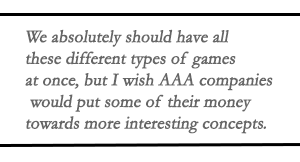 NYMG: Anything you’d like to add?
NYMG: Anything you’d like to add?
KO: My last AAA game purchase was actually the first time I preordered a game. I asked my mother for Dragon Age: Inquisition for Christmas last year, and I felt guilty about it. It was 70$ for something that I don’t need and could’ve waited for. I’ve only played a few hours of it because between work and school I don’t have enough downtime to really commit to it, and I’m still wrapped up in the other games I was interested in. I play games slowly, taking my time and exploring every inch of the world. When it comes to most AAA titles, this means it’ll take a long time for me to beat it. I realized when I first started Inquisition that I wouldn’t be able to commit to it until this summer, which made my pre-order seem even sillier in retrospect. I’m pretty sure this is a “lesson learned” situation, ha.
We hope to continue featuring community voices here on Not Your Mama’s Gamer in the forms of essays, interviews, profiles, and more as part of our #yesIplay initiative. If you’ve got something you’d like to share, contact us; we’d love to hear from you.

